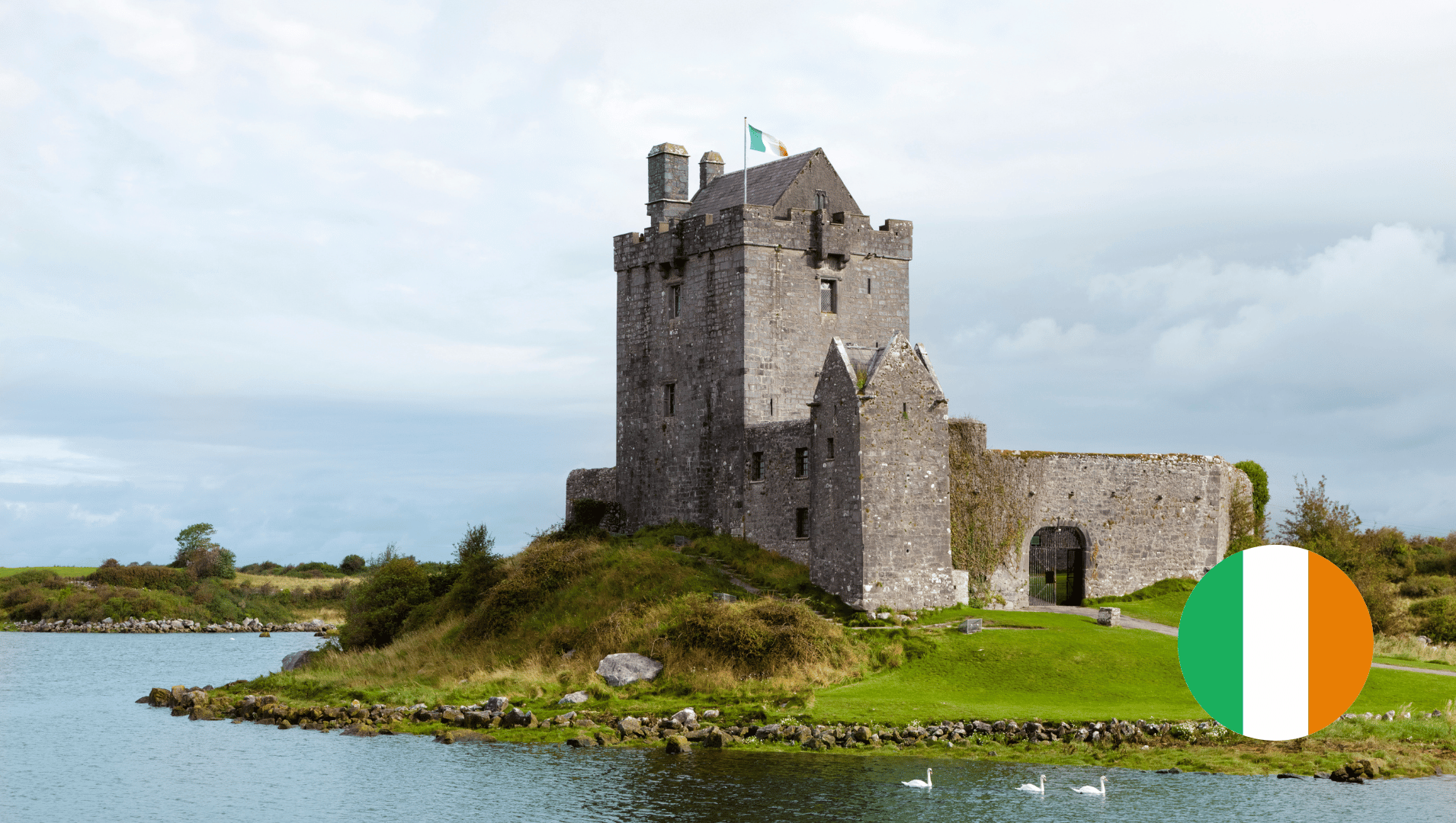
Why Ireland?
Ireland is a captivating destination that promises an enchanting journey for families and couples alike. With its lush green landscapes, rich history, and warm hospitality, Ireland offers a perfect blend of adventure, culture, and relaxation. Families can explore ancient castles, wander through picturesque villages, and enjoy outdoor activities like hiking and cycling. Couples will find romance in the stunning coastal scenery, cozy pubs, and charming bed-and-breakfasts.
Dublin and the East Coast
Kick off your Ireland journey in Dublin, where history and modern life meet with ease. Visit landmarks like Trinity College and Dublin Castle, wander the cobbled streets of Temple Bar, and soak up the city’s lively spirit. A stop at the Guinness Storehouse offers both a taste of tradition and sweeping views from the Gravity Bar. Dublin is the perfect place to begin your Irish adventure.
The Wild Atlantic Way
The Wild Atlantic Way stretches along Ireland’s rugged west coast, offering one unforgettable view after another. Stand at the edge of the Cliffs of Moher, explore the vibrant streets of Galway, or wander the quiet beauty of Connemara. With space to hike, cycle, and explore at your own pace, this region invites both families and couples to experience Ireland’s wild side filled with fresh air, adventure, and calm.
The South and Southwest
For a taste of Ireland’s southern charm, explore the counties of Cork and Kerry. In Cork, visit the historic Blarney Castle, browse the English Market, and enjoy the lively spirit of the city. Then head to Kerry for the iconic Ring of Kerry drive, with sweeping views, small towns, and dramatic coastline. Killarney National Park rounds out the journey with peaceful lakes, forested trails, and mountain views that linger in memory.
Few things to know
When planning your trip to Ireland, it's helpful to consider a few key details to make the most of your experience. Ireland has a temperate maritime climate, characterized by mild temperatures and frequent rainfall throughout the year. The best time to visit is during the late spring (May and June) and early autumn (September and October) when the weather is pleasant, and the landscapes are lush and vibrant. The summer months (July and August) are also popular but can be busier with tourists.
The Language
The primary language spoken in Ireland is English. However, Irish Gaelic (Gaeilge) is also an official language and is spoken in some regions, particularly in the Gaeltacht areas. While you may encounter Gaelic on signs and in certain cultural contexts, English is widely used and understood throughout the country. Learning a few basic Gaelic phrases can add to your experience, but you'll find that communication in English is easy and welcoming.
Transportation
Getting around Ireland is convenient with a variety of transportation options:
Rental Cars: Renting a car is a popular choice for exploring Ireland's scenic countryside and charming villages at your own pace. Major rental agencies are available at airports and in larger cities. Be prepared for driving on the left side of the road and navigating narrow, winding routes.
Trains: Ireland's train network, operated by Irish Rail, connects major cities and towns such as Dublin, Cork, Galway, and Belfast. Trains offer a comfortable and scenic way to travel between destinations, though some rural areas may not be serviced.
Buses: Buses are an affordable and extensive option for getting around Ireland. Companies like Bus Éireann and private operators provide routes that reach cities, towns, and rural areas. Consider using the Leap Card for convenient fare payments in Dublin and other participating cities.
Currency
Ireland uses the Euro (€) as its official currency. Credit and debit cards are widely accepted in hotels, restaurants, and shops. It's advisable to carry some cash, especially when visiting smaller towns, local markets, and family-run establishments. ATMs (cash machines) are readily available in cities and towns for convenient cash withdrawals.
Foods to try
Irish cuisine is known for its hearty and comforting dishes, often made with fresh, locally sourced ingredients. Here are some must-try dishes that showcase Ireland's culinary heritage:
Irish Stew: A traditional dish made with lamb or beef, potatoes, carrots, onions, and sometimes parsnips, all slow-cooked to perfection. It's a warming and satisfying meal, especially on a rainy day.
Boxty: A type of potato pancake made with grated and mashed potatoes, flour, and buttermilk. Boxty can be served with various toppings, including smoked salmon, sour cream, or bacon.
Colcannon: A side dish made from mashed potatoes mixed with cabbage or kale, and flavored with butter, cream, and scallions. It's a delicious accompaniment to many main courses.
Soda Bread: A classic Irish bread made with baking soda instead of yeast, giving it a unique texture and flavor. It's perfect for enjoying with butter, jam, or a hearty soup.
Seafood Chowder: A creamy and flavorful soup made with fresh seafood, potatoes, and vegetables. Coastal towns and cities offer some of the best seafood chowders, often made with locally caught fish and shellfish.
Full Irish Breakfast: A hearty breakfast that typically includes eggs, bacon, sausages, black and white pudding, baked beans, grilled tomatoes, and toast or soda bread. It's a filling and delicious way to start your day.
Need More Inspiration?
Ireland's vibrant culture, steeped in music, literature, and folklore, invites travelers to immerse themselves in its unique traditions. Whether you're tracing your ancestry, savoring traditional Irish cuisine, or simply soaking in the breathtaking beauty of the Emerald Isle, start your Irish journey in Dublin.